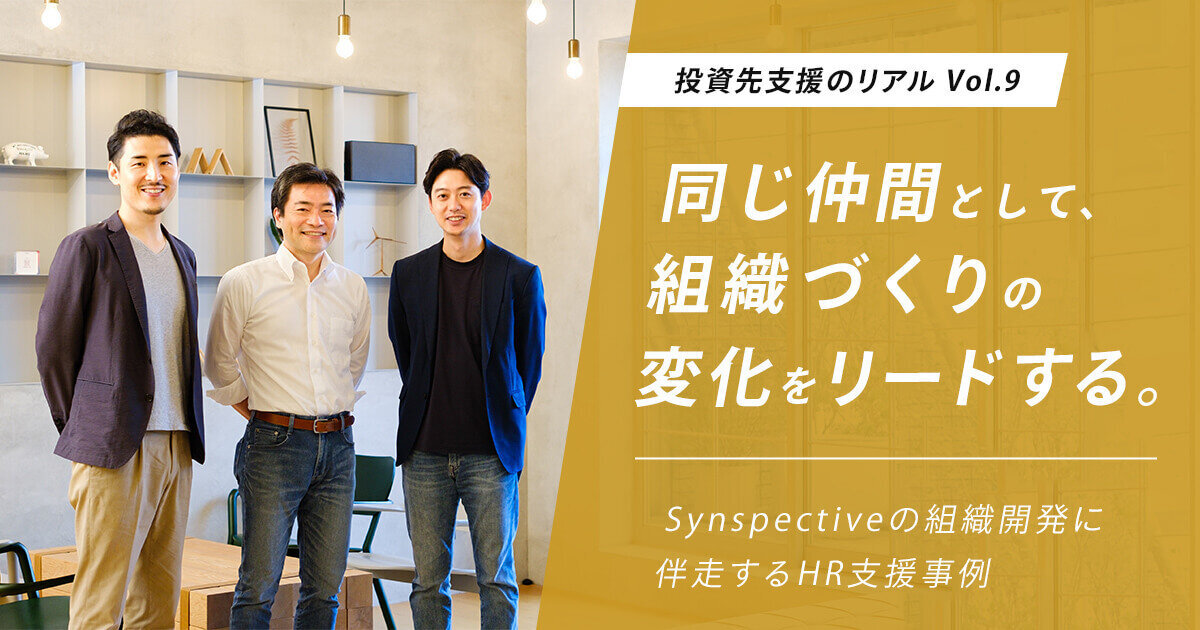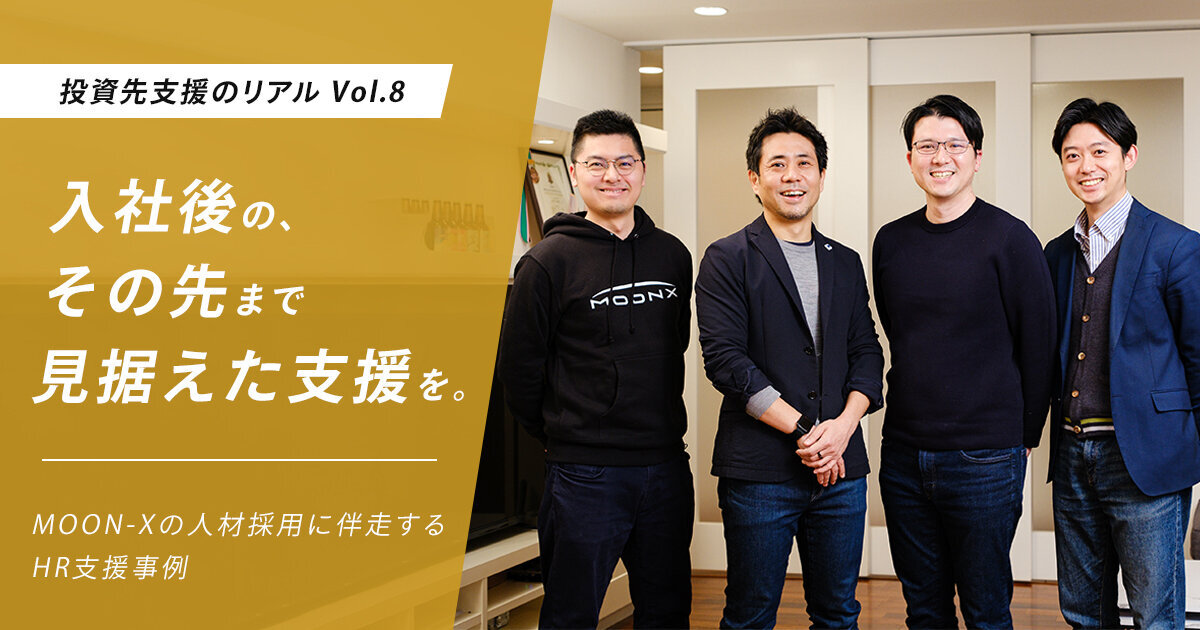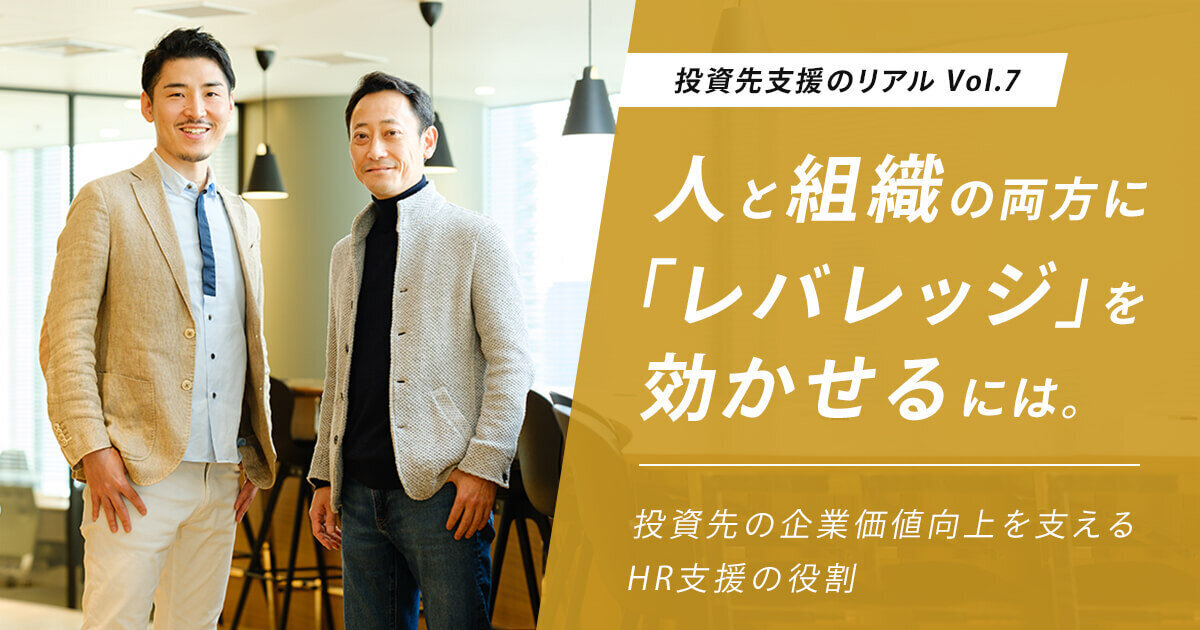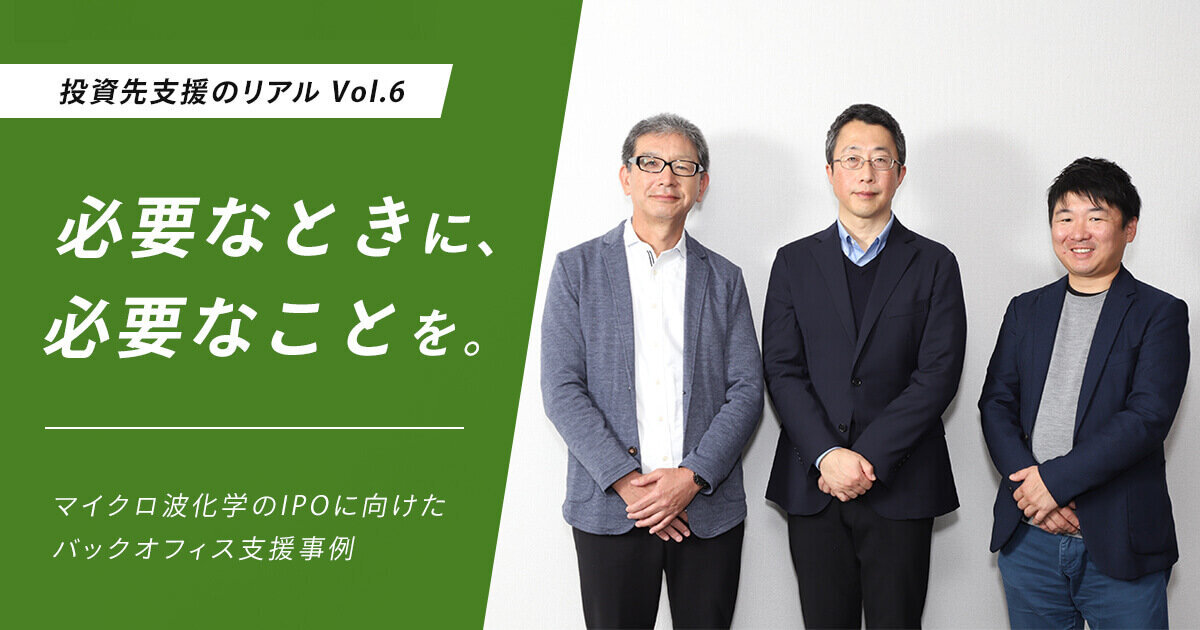Issues concerning people and organizations have a significant impact on the growth of a company. Particularly with startups, the rapid pace of business expansion makes it essential to build an organization to realize the mission and vision.
JAFCO supports its portfolio companies in addressing these startup challenges, not only through recruitment support, but also through HR system design and organizational development. In this issue, we talked with CEO of Synspective Inc. Motoyuki Arai as well as Kazuki Tsuboi of our Business Development Division and Tatsuya Nagaoka of our Investment Division about JAFCO's support to Synspective in HR since its initial investment in April 2018, shortly after the company's founding, to the present day.
【Profile】
Motoyuki Arai, CEO, Synspective Inc.
He began his career working at the Tokyo office of a US-based consulting firm for five years. He helped more than 15 global companies design new business and technology strategies and improve corporate governance and internal controls. He received his PhD in Technology Management for Innovation from the University of Tokyo. His research focused on the construction of energy systems to promote economic growth in developing countries. He then implemented his knowledge of business development to lead projects in areas such as energy, water and sanitation, agriculture, and recycling in Saudi Arabia, Bangladesh, Laos, Cambodia, Kenya, Tanzania, and disaster-stricken areas in Japan. Aiming to create a sustainable future through innovation based on new information from satellites, he founded Synspective in 2018.
【Synspective Inc.】
Synspective designs, builds, and launches a fleet of SAR satellites to detect and understand changes across the globe. With the mission of "realizing a Learning World where people are empowered through new data and technologies to maximize their capabilities and make tangible progress toward a more sustainable future," the company operates a constellation of small SAR satellites and related systems and provides SAR data sales and data analysis solution services.
We had zero resignations for the first few years after the company was founded. But then we faced the "100 employee barrier."
─First of all, please tell us about the space business that Synspective is involved in.
Arai At Synspective we develop and operate small SAR satellites and provide solutions using the acquired data.
Unlike ordinary optical satellites, SAR satellites can observe earth anytime, anywhere regardless of time of day or cloud conditions. Previously, it was technonogically difficult to miniaturize satellites and their high launch cost was a bottleneck, but the Japanese government-led ImPACT (Impulsing Paradigm Change through Disruptive Technologies Program) succeeded in miniaturizing them. Our company was founded in 2018 to implement the results in society.
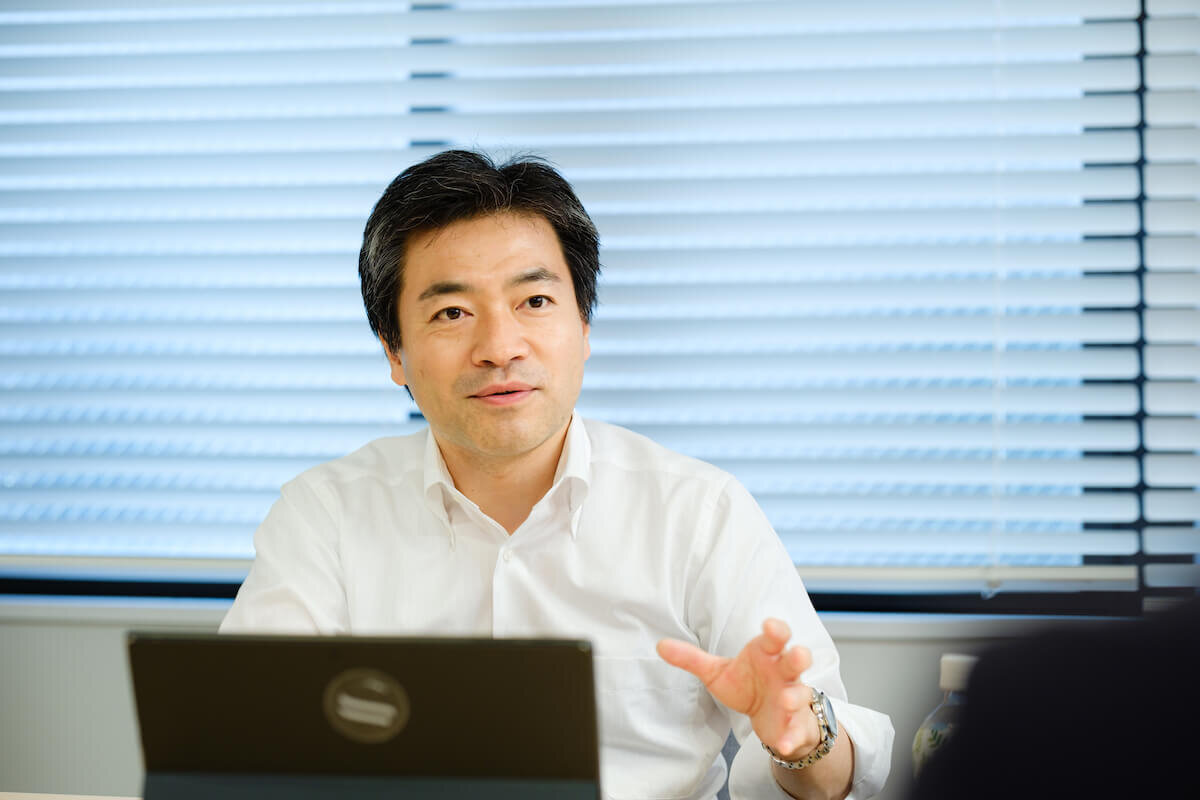 Motoyuki Arai, CEO, Synspective Inc.
Motoyuki Arai, CEO, Synspective Inc.
What sets us apart is that we conduct not only development and operation of small SAR satellites, but also analyze acquired data and provide solutions. Small SAR satellites themselves will undoubtedly bring us new data, but unless we decipher the data and extract the necessary information, we will not be able to contribute to the realization of a sustainable future. We are committed to providing one-stop services because we aim to realize a Learning World where people can accumulate their own learning through the creation and understanding of data.
─You raised billions of yen through your initial financing round and, with the special nature of the space business and the multiple areas of expertise, I imagine that many of the people you were looking to hire were extremely high-level personnel. Considering such pressures, I assume that it must have been difficult for you to expand your organization from its inception.
Arai That's right. I was surprised at first, because we were talking about raising several hundred million yen, but when it was all said and done, we ended up receiving many times that amount in investment. During the first three years after the company's founding, none of our members resigned because they joined with determination, and we were able to increase our workforce to 100 employees in just a few years.
At that time, under the slogan of "a network organization of professionals," we hired only those who were both excellent as individuals and capable of working as a team to build the business from the bottom up through trial and error.I think the reason why no one left the company was due to the fact that we hired only those who met these criteria and that they joined the company with great determination despite the highly uncertain nature of the business.
─But then the company was then faced with organizational challenges.
Arai Yes, when the number of employees reached 70 to 80, the organization gradually began to change. This is the so-called "100 employee barrier."
Until then, there had been an atmosphere of shared goals and visions in the company even without any particular deliberation, but as the organization expanded rapidly, mutual understanding among employees began to lose pace. The COVID-19 pandemic was an additional blow: despite the complexity of each of Synspective's areas of expertise, moving online meant fewer face-to-face conversations, and as a result, it became harder to see what each person was thinking.
This was spurred on by the siloing of the company. Even under such circumstances, Synspective's talented and responsible employees spontaneously took initiatives to make a change. However, when it becomes difficult to see the company's movement as a whole, each person will move in an only partially-optimized manner. At the time, we were beginning to organize managers and build a hierarchical structure. As a result, we were on the verge of becoming an organization in which it was more difficult to see company-wide movement.
─What did you do to overcome the "100 employee barrier?"
Arai We addressed both explicit and tacit aspects. On the explicit side, we worked to establish a mechanism, and on the tacit side, we addressed mindset and values.
We had to spend a lot of time working on the tacit aspect. What was understood by the initial members was not understood by the new members. The values of each point in the code of conduct had to be communicated and it was important that everyone understood the background and history behind the values of Synspective.
In order to align our perceptions as a company, I thought it was necessary to take the time to discuss things, so I started initiatives such as "CEOffice hour" for 1-on-1 meetings with me. We are also gradually putting in place a mechanism to improve the explicit aspect by interviewing frontline managers and working with members of the Corporate Strategy Office.
However, while some organizational issues can be solved by a mechanism, others cannot. Since it is necessary to do both properly, we are continuing to make improvements.
By visualizing the organizational situation through the survey, we were able to derive the direction and measures of the organizational strategy.
─As the organization expands once again, what was the background and reason for consulting JAFCO for HR support?
Arai Our original intent in consulting with JAFCO was to update our personnel system. With the expansion of our organization, we wanted to create a system that would allow us to evaluate employees more accurately.
At that time, we were also making changes to our organizational structure and wanted to reexamine the kind of organization we should be aiming for. We had been working with JAFCO since it made its initial investment, and also they are a venture capital firm that had been involved in startups for many years. I wanted them to evaluate Synspective from a third-party perspective, so I approached them about our organizational strategy.
Tsuboi At the time, Synspective had a strong commitment to organizational development and a clear credo of values, but I had the impression that it had not yet fully formulated how to exemplify these values throughout the company. Therefore, I proposed that they first conduct an organizational survey to clarify what the employees wanted from the company, and then consider together what the organization should look like.
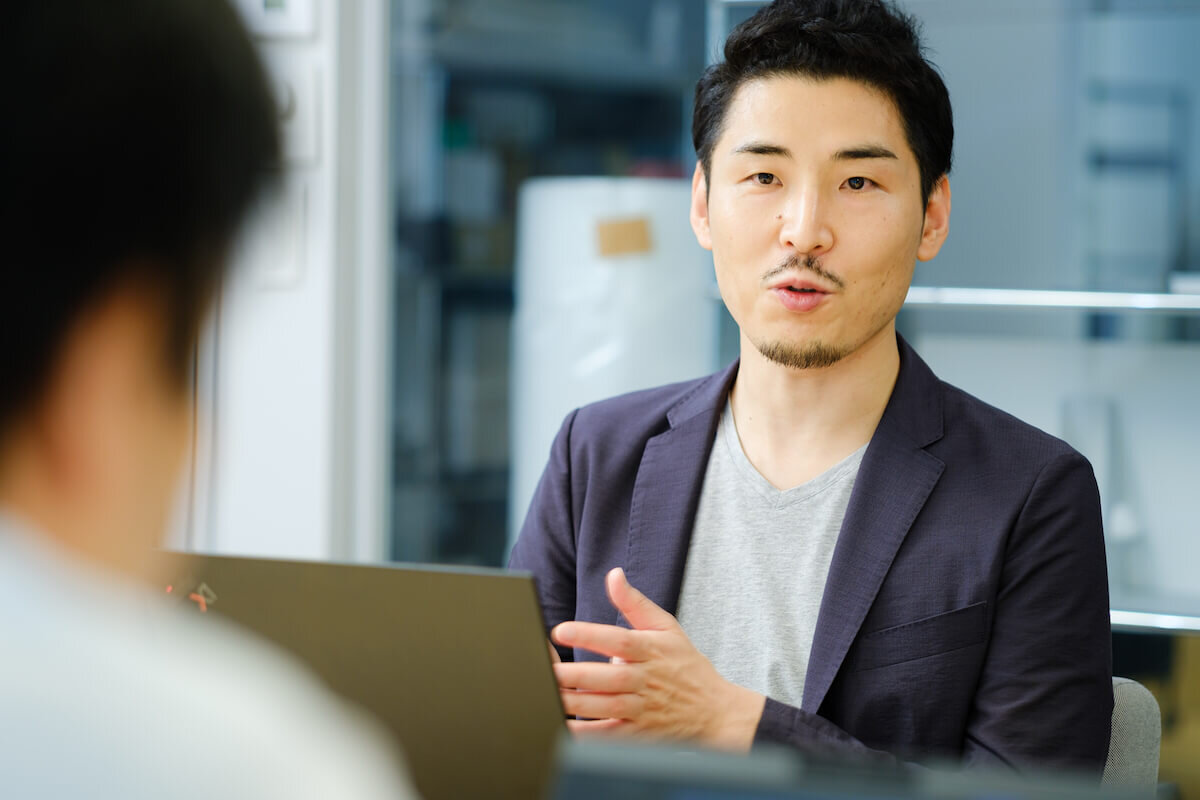 Kazuki Tsuboi, Business Development Division, JAFCO
Kazuki Tsuboi, Business Development Division, JAFCO
─Please tell us about the content of the organizational survey you conducted and the insights you gained.
Tsuboi First, we conducted an organization survey to promote organizational development based on an understanding of employees' expectations of the company and current gap. In advance of the survey, we had a dialogue with the management team, utilizing the survey items, about the ideal organization that Synspective envisions two years from now.
The survey results showed that the management's ideal direction for the organization was similar to the direction expected by the employees. Specifically, it became clear that the company needed to communicate its corporate philosophy, to gain more buy-in for its strategy, and to develop a more collaborative relationship within the company. If the directions of the two parties were different, it would take time, but it was impressive that the two parties shared the same ideal organizational image, perhaps due to Synspective's emphasis on communication and credo.
Arai We tried to understand concerns expressed by employees in the survey through the CEOffice hour in real time, and since other managers were making similar attempts, I believe this played a role in preventing significant discrepancies.
It was a great success that we were able to collect objective and quantitative data from this survey. We would like to use this data for ongoing effectiveness verification and to create a culture that promotes team building.
─How exactly will the results of the survey be used?
Tsuboi The purpose of the survey is to know the status of the organization quantitatively and qualitatively. Based on the results, we need to change the organization by identifying priority issues to be resolved and implementing countermeasures. Therefore, we started with the Organization Learning Session (OLS) to create a place for continuous dialogue through workshops together with the management team. Since no organization is without challenges, we believed that there is value in the opportunity to continuously communicate what they have learned and felt from the practice of organizational development.
Discussions around the question "what is the ideal state of the organization two years from now?" was also a part of OLS. After the initial survey and OLS, organizational development started, including goal-setting and credo workshops in conjunction with the introduction of the new personnel system, and the start of monthly all-manager meetings.
Arai Thanks to JAFCO, based on the survey, we were able to get an accurate picture of the situation with regard to the issues and consider future actions. Survey results alone do not provide a detailed understanding of the status of an organization. This is because the methods of analyzing and interpreting the results vary depending on the actual situation of the company.
I believe that JAFCO has given us the right analysis for our company because they have invested in and supported all kinds of startups as a venture capital firm. We will continue to make fixed point observational use of the survey to further enhance the sense of cohesion in our organization by repeatedly identifying issues and implementing measures.
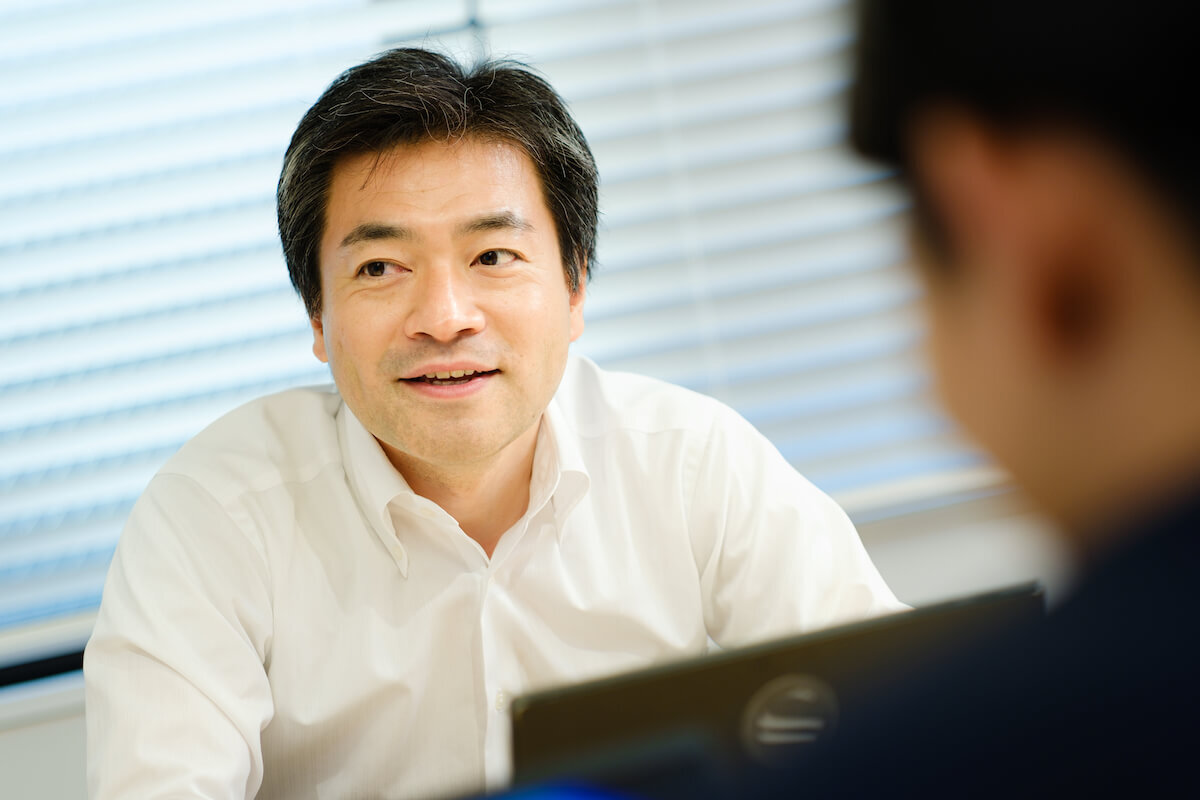
Tsuboi Through this survey and workshop, we have been able to see the direction of Synspective's organizational development. What became particularly clear to me was the balance between the explicit aspects, such as the personnel system, and the tacit aspects, such as the mindset. I got the impression that Synspective would be more cohesive as an organization, if the management team had more leeway to make decisions based on mindset rather than on a rigid system.
Of course, as the size of the organization grows, the optimal balance will also change. We would like to continue to provide support by determining the appropriate organizational structure for each growth phase of the company.
If you want to grow your company, it is important to invest not only in business but also in people.
─Synspective is very motivated in organization building. What does organization mean to you, Mr. Arai?
Arai It is something that can have a great impact on society as a whole.
I myself have been working as an individual freelancer for many years without belonging to any company. I participated in various projects in different countries and was able to accumulate extensive know-how, but ultimately the scope of what I could do on my own was limited and I did not feel that I was making a social impact. I believe that organization is the only form that can have an impact on solving social issues.
─As a startup, however, you must face various challenges concerning business. Why do you place the highest priority on organizational development?
Arai We believe that organizational development, that is, investment in people, is most effective from both a managerial and economics standpoint. In terms of company management, employees are what provide strength. The business may pivot and shift frequently. Based on this premise, it is easier for a company to achieve continuous growth by developing employees who can withstand changes in the business than by investing in specific technologies and resources related to the business.
In the field of economics, it is said that investment in people has a positive impact on economic growth. According to the endogenous growth theory of U.S. economist Paul Romer, among the many assets in production activities, investment in human capital (the learning effect) is said to bring about innovation and contribute the most to economic growth. Against this backdrop, Synspective focuses on investing in people, that is, organizational development, which provides high returns over the long term.
Nagaoka Mr. Arai has been mentioning the terms "data-driven" and "collective learning" ever since JAFCO made its initial investment. Actually, when JAFCO made its initial investment, Synspective had just been established and had almost no employees. Even so, I remember that we were impressed by Mr. Arai's past history, vision, and enthusiasm for the business and asked him to let us work together.
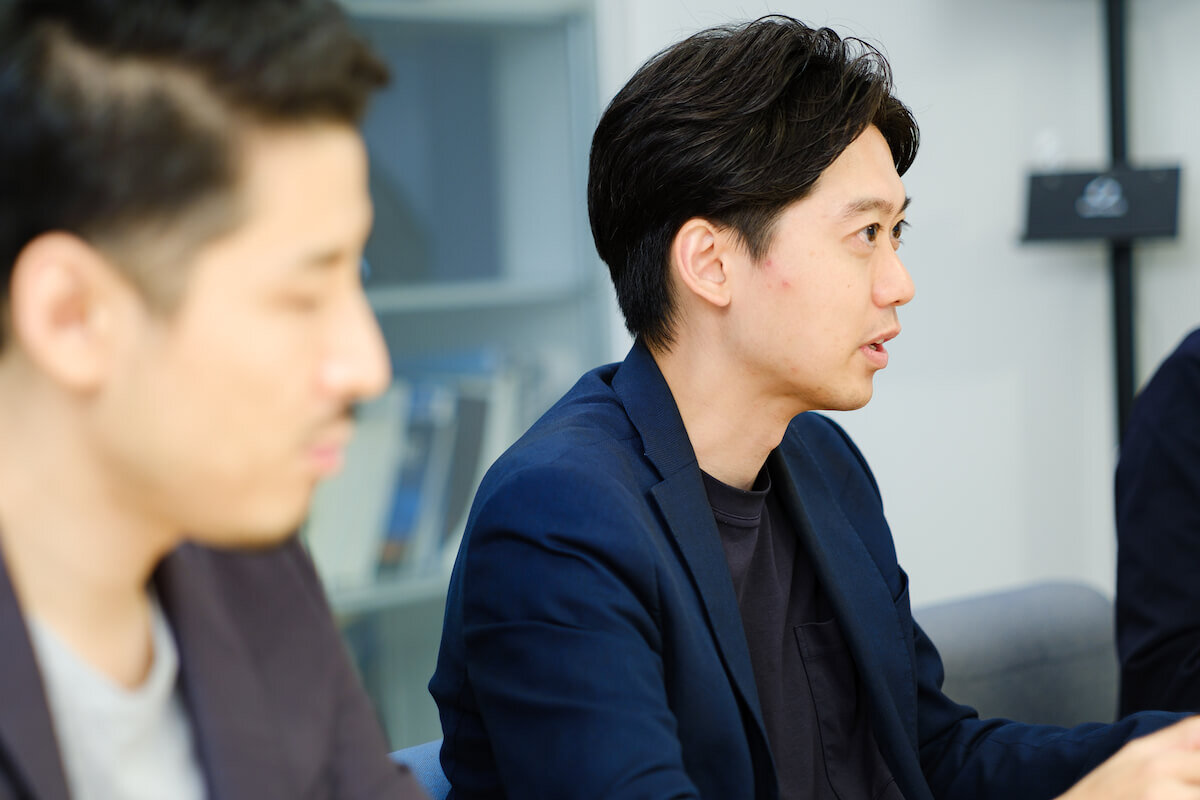 Nagaoka Tatsuya, Investment Manager, JAFCO
Nagaoka Tatsuya, Investment Manager, JAFCO
Arai A startup can't succeed without people who are willing to take risks and work together to make the company thrive. In that sense, JAFCO has supported us in many ways from the early days to the present.
JAFCO's strengths in supporting companies are its experience-based objectivity and accumulated expertise.
─What are your impressions of JAFCO's HR support so far?
Arai I realized that this is what "hands-on" means.
Recently, more and more venture capital firms are claiming to support their portfolio companies, but most of them seem to end up only meddling to the extent of their investment. By contrast, JAFCO is a serious accelerator. When they made their investment, they worked closely together with us on sales activities and sought improvement measures. In this HR support, they have been kind enough to consult with us no matter how detailed the issue. Because I know that they are investing their time or life in the same way as our employees, I see them not as venture capital firm but as trusted colleagues of our company. We even ask them to participate in company-wide general meetings and game tournaments [laughs].
Besides, I appreciated the fact that they could look at it from an objective third-party perspective. At the same time, since we have been building a relationship with them since shortly after the company was founded, they understand how the organization was formed. By scooping up and evaluating our implicit culture, we were able to discover our strengths and weaknesses.
Various organizations and academic institutions have studied business models and business development and systematized them as management science. However, startups are so diverse that it is difficult to directly apply existing know-how. In particular, organizational development tends to be an afterthought.
That is why I think it would be interesting if JAFCO, which has seen an overwhelming number of startups, would lead the change in organizational development by utilizing its experience-based objectivity and accumulated expertise. I would like to see JAFCO support startups' innovation with its strength in supporting organizational development.
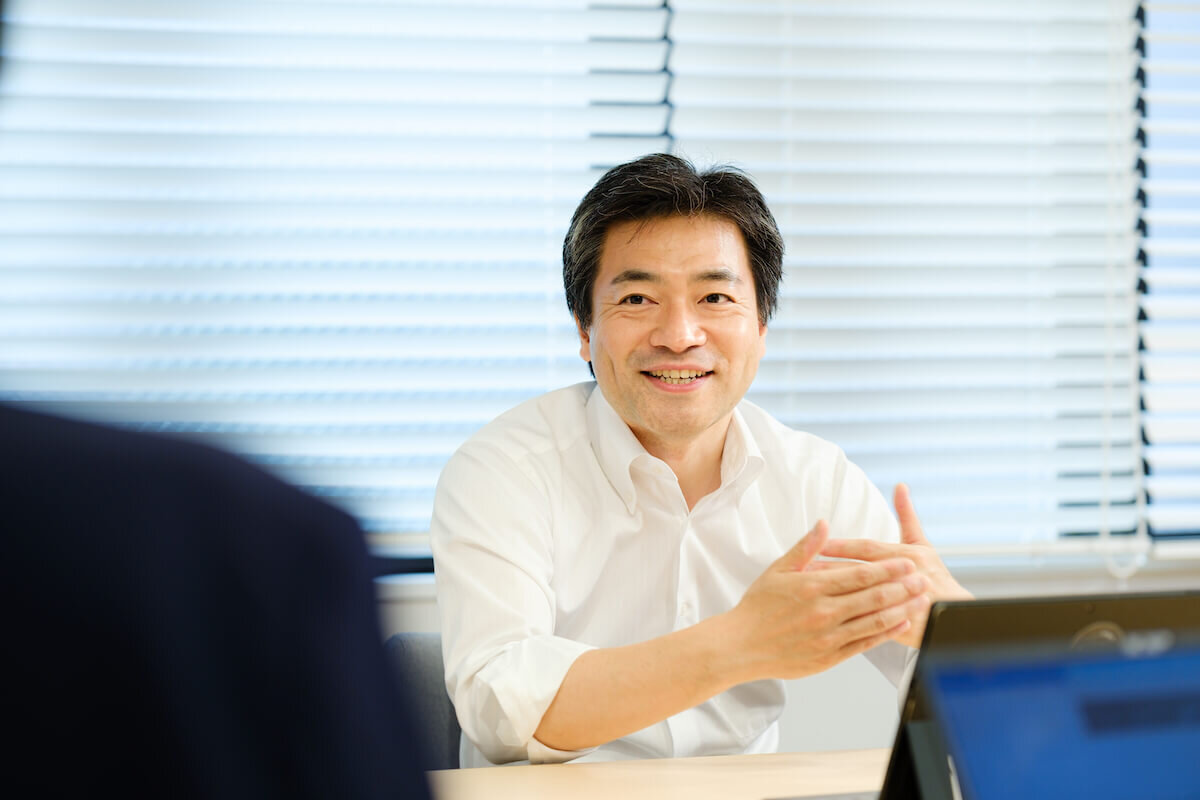
─What kind of organization is Synspective aiming to be with this HR support?
Arai We do not stifle the good qualities of individuals just because we are an organization. Rather, we focus on joining forces to solve social issues while maintaining the freedom of individuals.
To achieve this, we must maximize the knowledge gained by individuals as a team. That is why we place importance on learning together based on objective data and through repeated failures.
By being "data-driven" and through "collective learning," we hope to enable the organization itself to embody our mission of a "Learning World."
In organization building, there is no fixed right answer. That's why we tackle difficult issues with trusted colleagues.
─Finally, do you have a message for startup entrepreneurs and managers who are struggling to build their organizations?
Arai Organizational development is an area where the right answer is constantly changing. In particular, when a company grows quickly, individual growth will not be able to keep up in most cases. That's why it's necessary to rebuild appropriate systems and mindsets at each stage while revitalizing the organization.
Of course, changing an organization that you have worked so hard to think through can be painful. I myself found it difficult to face what I didn't want to see and to talk openly with my employees.
At such times, we need the help of others. I think it's a good idea to bring in colleagues who can evaluate the current situation from an objective point of view and work with us to determine how we should proceed with our efforts.

